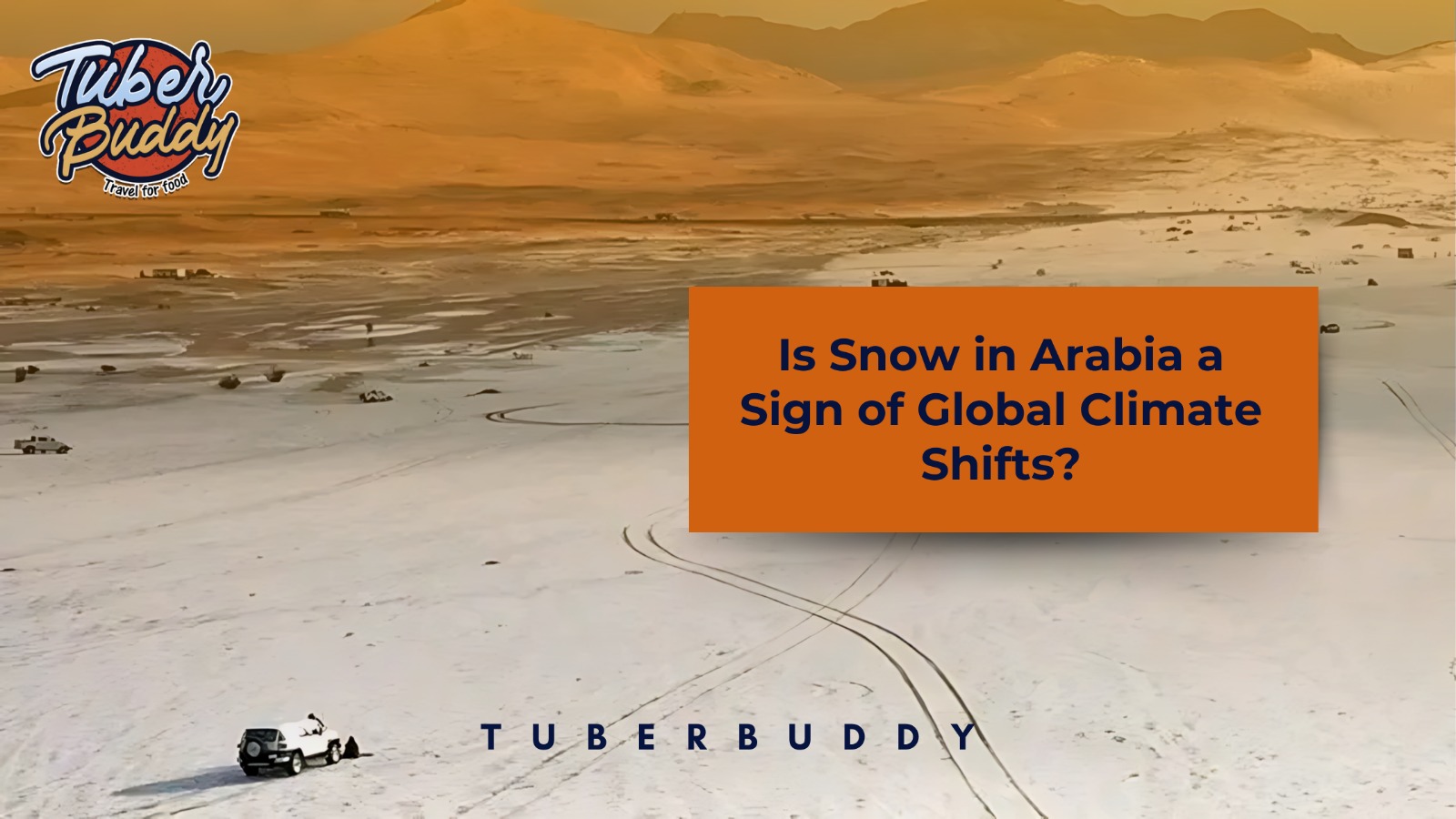Is Snow in Arabia a Sign of Global Climate Shifts?

Introduction
In recent years, unusual weather phenomena, like snowfall in the Arabian Peninsula, have left many wondering if these occurrences are evidence of global climate shifts. Regions known for their arid, desert climates—such as Saudi Arabia—have seen rare snowfalls, sparking curiosity and concern around the world. Is this just an isolated anomaly, or is it indicative of larger environmental changes? In this blog, we’ll explore the science behind these unusual weather events and discuss what they could mean in terms of climate change and future weather patterns.The Context of Snow in Arabia
Snowfall is rare in Arabia, especially in lowland desert areas. However, in recent years, certain mountainous regions in Saudi Arabia have experienced snow. While snow is occasionally seen in higher elevations during winter, recent snowfalls have been observed at lower, more populated areas, a phenomenon that seems to be occurring more frequently. These unusual events are prompting scientists to examine if they might be connected to global climate shifts.Climate vs. Weather: Understanding the Difference
Before diving into the reasons behind this anomaly, it’s essential to distinguish between climate and weather. Weather represents short-term atmospheric conditions, such as rain or heat, while climate refers to long-term patterns over decades or centuries. A single snowfall event in Arabia may not directly indicate a shift in climate, but repeated unusual patterns over time can provide valuable data for understanding broader climate trends.How Global Warming Impacts Weather Extremes
Warming Oceans and Changing Jet Streams
The Earth’s rising temperatures, largely driven by greenhouse gas emissions, have led to warming oceans. This warming has an impact on global weather patterns, including the jet streams that influence weather across regions. When jet streams become destabilized, they can bring unusual weather conditions to areas that wouldn’t normally experience them—like snow in the deserts of Arabia.Increased Frequency of Extreme Weather Events
Global warming is linked to an increase in extreme weather events. These include heatwaves, droughts, hurricanes, and even unusual snowfalls. Scientists point out that as the climate warms, extreme weather events will likely become more frequent and intense. Snow in places like the Middle East may seem unusual now, but if climate trends continue, these events might become more common.Shifts in Regional Weather Patterns
Climate change does not affect all regions equally; it has varying impacts around the world. For instance, while some areas may experience record-breaking heat, others may face colder-than-average winters. The Arabian snowfall could be one example of how regional weather patterns are being altered in unexpected ways as the planet’s climate system adjusts.Is This Evidence of Climate Change?
Scientists are cautious about attributing single weather events directly to climate change. However, unusual events like snow in Arabia provide a point of reference for examining climate trends. Repeated anomalies in regions that typically experience consistent climates can signal shifts in the Earth’s atmosphere. Researchers rely on historical data and climate models to identify patterns, and events like snow in deserts may suggest that the climate system is becoming less predictable.The Role of Polar Vortex and Arctic Oscillation
The polar vortex, a large area of low pressure and cold air surrounding the poles, sometimes weakens, allowing cold air to move southward. This can result in unusually cold weather at lower latitudes, such as in the Middle East. Similarly, the Arctic Oscillation, a weather phenomenon influenced by atmospheric pressure, can lead to cold air reaching farther south than usual. When either of these systems shifts, regions like Arabia can experience abnormally cold temperatures, which might explain the sporadic snowfall.What Snow in Arabia Could Mean for the Future
Increased Awareness of Climate Issues
Seeing snowfall in unexpected places may raise awareness about the urgent need to address climate change. Unusual weather events like snow in Arabia draw attention to how interconnected the Earth’s climate systems are, potentially encouraging communities and governments to take action on reducing carbon emissions and adopting sustainable practices.Potential Changes to Local Ecosystems
Although snow in Arabia may seem like a novelty, unusual weather can have significant impacts on local ecosystems. The Arabian Peninsula is home to plants and animals adapted to desert conditions. A sudden freeze or snowfall can disrupt these delicate ecosystems, affecting both plant life and the wildlife that depends on it. As climate patterns shift, the risk of unexpected weather events could pose challenges to local biodiversity.Adaptation and Preparedness
If unusual weather patterns like this persist, regions with historically predictable climates may need to adapt. Infrastructure designed for dry, hot weather might struggle with extreme cold, which can lead to unexpected expenses and logistical issues. Being prepared for diverse weather scenarios, including rare events like snow, is becoming increasingly important in adapting to climate variability.Conclusion
While snow in Arabia may seem like an isolated occurrence, it reflects a larger, complex picture of global climate shifts. Though it’s challenging to link a single event directly to climate change, these unusual weather patterns align with predictions of increased variability due to global warming. As we continue to observe these trends, it’s essential to remain informed about climate science and take proactive steps to mitigate further environmental changes. Addressing climate change requires global cooperation, and awareness of events like snowfall in Arabia is a step toward understanding the impacts of a warming planet on our lives.
Top 10 Restaurants in Chennai | Best Food Spots You Must Try Chennai, a bustling metropolis in Tamil Nadu, is a melting pot of cultures and cuisines. From traditional South Indian fare to international delicacies, the city boasts a plethora of dining options. Here’s a list of the top 10 best restaurants in Chennai that […]
Famous Food in Tamil Nadu | Traditional Dishes You Must Try Tamil Nadu, a state in southern India, is known for its rich culinary heritage and diverse flavors. From spicy curries to aromatic rice dishes and mouth-watering snacks, Tamil Nadu’s cuisine is a feast for the senses. Here are some of the top and Easy […]



